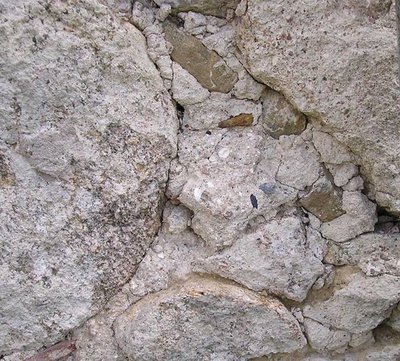- Home
- Skills Training
- Courses
- Making, Using and Specifying Hot Mixed Lime Mortars
This one day workshop aims to provide an introductory guide to the preparation and use of’ hot mixed’ lime mortars, that is, mortars prepared by slaking quicklime, sand and natural hydraulic lime binders (and possibly other additives like tallow
‘Hot mixed’ mortars have a long history of use in the UK, with evidence visible throughout the nation on traditional buildings and structures. Since the lime revival of the mid 1990s however, the preparation and use of conservation mortars has been largely dominated by lime putty bound mortars or ‘cold’ mortars based on natural hydraulic limes (NHLs). Whilst all these mortar types have their place, a renewed interest in the production of what are perceived to be more authentic mortar preparations using quicklime and sand has been growing and this workshop aims to take the building professional through the process of specifying ‘hot mixed’ mortars including health and safety implications, constituents, preparation of mortars, correct mixing equipment and critically at which point these mortars should be used for particular applications
By the end of the course, attendees will be able to recognise traditionally made ‘hot mixed’ mortars in historic structures and buildings and be able to develop the skills to specify ‘hot mixed’ mortars in relation to authenticity, performance, exposure, season, substrate and nature of the masonry repairs required.
Download full course description (PDF)
Course suitability
This course is aimed at building contractors (including stonemasons, bricklayers, lime workers and labourers) and Specifyers (including architects, building surveyors, engineers and other heritage professionals) involved in historic building repair, reconstruction and the consolidation of historic structures and give you the confidence to make and use ‘hot mixed’ mortars successfully
In addition, owners of historic buildings may also find this course of benefit when planning maintenance, renovation or conversion projects for traditional buildings.
Learning outcomes:
Ability to recognise traditionally made ‘hot mixed’ mortars in historic buildings and structures;
Understanding of the analysis techniques to best match and specify ‘hot mixed’ mortars for repair work;
Ability to create repair strategies appropriate for masonry repair works using ‘hot mixed’ mortars;
Understand at which point, post production of ‘hot mixed’ mortars, these mortars should be used;
Develop clear and precise specifications for ‘hot mixed’ mortars;
Understand the setting characteristics and aftercare required for the successful use of ‘hot mixed’ mortars.
Course Programme – through a blend of theory and practical sessions
Health and safety briefing;
Historic preparation and use of lime (and other) based mortars;
Understanding the range and production methods of lime binders available in the UK today;
Understanding other mortar constituents including sands and aggregates, pozzolans and other additives such as animal fats and milk products;
Why specify ‘hot mixed’ mortars? Including issues of authenticity, performance, workability and challenges thereof;
Causes of failure – including slow slaking, slow carbonation, wet and exposed locations, unpredictable materials and avoiding failures;
Developing a specification for lime mortar repairs – factors to consider, mix proportions, mixing equipment, when to use ‘hot mixed’ mortars post production and Building Standards;
Perceived barriers to specification – including Health and Safety for safe storage of materials, mixing regimes and safety in use.
Best practice for the production of sound specifications for ‘hot mixed’ mortars.
Cost
£212.00 + VAT
(£254.40 incl VAT)
Starting on: Sept. 5, 2025:
